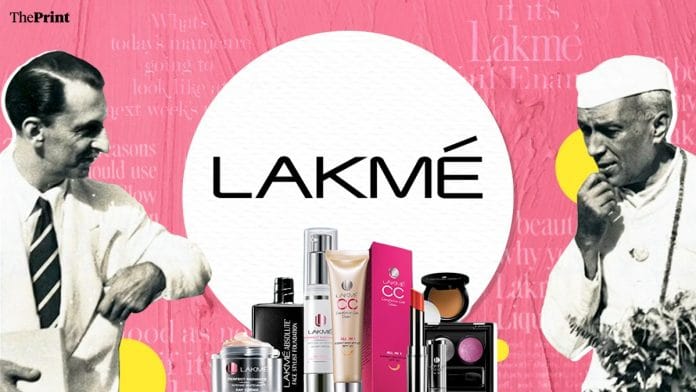New Delhi: Whether it’s some lip gloss to get through the day or a statement winged eyeliner, Lakmé has been a woman’s best friend over the past decades.
A ‘Make in India’ project, Lakme Cosmetics was the first indigenously-developed makeup brand to have been introduced in the country in the 1950s.
The idea behind establishing Lakme was born after former Prime Minister Jawaharlal Nehru came to know that Indian women were splurging the country’s precious foreign reserves on make-up brands from the West.
Nehru quickly approached industrialist Jehangir Ratanji Dadabhoy Tata for a solution and Lakmé was introduced as India’s first homegrown cosmetics brand in 1952. It was a subsidiary of Tata Oil Mills, a company originally tasked with crushing copra for exporting coconut oil.
The name Lakme is a French word for goddess Lakshmi, known for her beauty in mythology. This was suggested by the brand’s French collaborators, Robert Piguet and Renoir. Lakme was a popular opera in France by Léo Delibes, named after its protagonist who was inspired by the Indian goddess.
Lakme was groundbreaking for the Indian market because it offered cosmetics suitable for Indian skin types, for which extensive research was carried out.
The brand got a makeover when Dadabhoy’s Swiss wife Simone Tata took over as its managing director in 1961. From pricing of products to the brand’s positioning, she made it a household name. Simone became the company’s chairperson in 1982.
Also read: Hari Sadu – Naukri.com’s bad boss from 2006 ad still present during ‘The Great Resignation’
Go-to brand
“I never knew Lakmé was an Indian brand. I always thought it was European. And it was affordable too, so I always liked to buy them during my college days. But the reason for my preference was also because it was everywhere. It was advertised in the newspapers, TV and all my favorite actors were in it. I still use some of its products,” said 44-year old Seema Rana, a teacher at a Delhi school.
Dolly Sharma, also a Delhi resident, had similar reasons for liking Lakmé products over others.
“My husband runs a pharmacy. Lakmé brings us the most revenue because it is the preferred choice of customers. Personally, I have known about the brand for the longest time. It was the only makeup brand I knew that was used by people around me…my mother and elder sister. So when it came for my time to choose a brand for myself, it was quite straightforward and simple,” she said.
Aggressive marketing
At a time when villains in TV shows were shown wearing kohl-lined eyes and brightly painted lips, advertising for cosmetics was tricky. To make inroads in the Indian market, Lakmé applied aggressive marketing tactics, including pumping in large amounts of money into press advertisements and magazine spreads.
Flaunting 80s heartthrob and supermodel Shyamoli Verma as the brand’s first face, Lakmé began its campaign of breaking taboos around applying makeup. Verma later came to be known as the ‘Lakmé girl’. Dressed in traditional attire and adorned with Lakmé products, playing Indian musical instruments like the sitar and flute, she showed the brand to be an amalgamation of modernity and ‘Indianness’. ‘If colour be to beauty what music is to mood, play on’ was the brand’s first catchy tagline.
That was just the beginning. Soon after, they roped in Bollywood actors like Rekha, Aishwarya Rai Bachchan, Kareena Kapoor Khan, Shraddha Kapoor and Kajol Devgn. Most recently, it signed Ananya Panday as an endorser for its range of lip care products.
In 1996, Lakmé formed a 50:50 merger with Hindustan Unilever. Two years later, Tata divested of its 50 per cent share in the company and sold it to Hindustan Unilever, which had a vast and varied experience in the global FMCG world.
Over the years, Lakmé has become a force to be reckoned with. In 2014, Brand Trust Report ranked the company 36th in its list of India’s most trusted brands. It has also been a title sponsor of the prestigious bi-annual event Lakmé Fashion Week (LFW), which takes place in Mumbai. Today, it has over 300 diverse products ranging from Rs 100 to more expensive ones that cater to over 70 countries worldwide.
Also read: Chacha Chaudhary — Indian comic book hero who broke masculine archetypes like Superman, Batman






